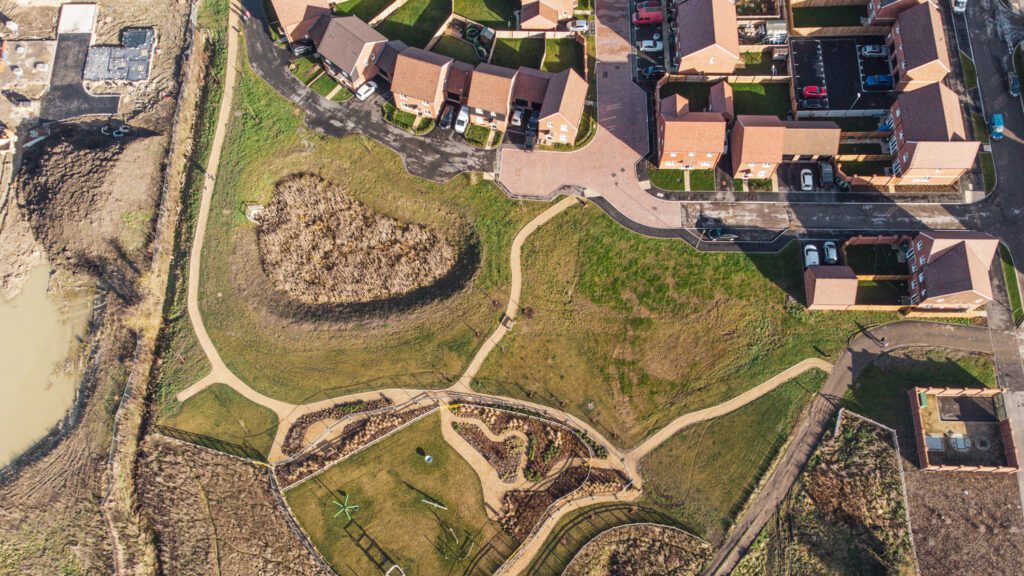Authors
In an earlier article we outlined the key features of various deal structures that may be used when selling land with development potential. In this article we focus on options, promotion agreements and hybrid agreements and outline some pros and cons of each from a landowner perspective.
Option agreement
An option agreement offers the landowner a relatively straightforward arrangement with a developer who will promote the land, buy it (if the price can be agreed) and develop it.
A positive for the landowner is that they will be contracting with the likely end user of the land and so can forge a relationship with that party. A developer may offer favourable terms if it wants to build out the site. In addition, the developer will generally be procuring a planning permission for itself and so the risk inherent in a promotion agreement, of the planning permission falling short of a developer’s requirements, is removed.
Risks to consider are:
- The parties’ interests are generally aligned, until the price negotiation stage. Until then, both parties want to see planning permission granted. Once planning permission is granted, there will be a negotiation on price and there may be a significant difference between what the developer is offering and what the landowner is seeking. If the price can’t be agreed, the option will usually provide for expert determination. A key protection for a landowner is therefore the inclusion of a minimum price clause with indexation, and a cap on the recoverable planning and promotion costs.
- Timing is another area where the parties may not be aligned. The developer may want to slow down the planning process to accommodate other competing priorities. To address this, timescales can be built in to govern the planning process. However, landowners should proceed with caution before imposing strict timescales. It may be more advantageous for both parties to delay the application so as to wait for a more favourable local planning landscape, and generally the developer is best placed to assess this.
Promotion agreement
Many landowners will veer towards a promotion agreement, because of the attraction of exposing the site to the open market and testing its value once planning permission has been granted, rather than the prospect of a battle on price with a developer under an option.
Key points to think about are:
- The parties’ interests are aligned to an extent in that the land owner and promoter both want to get planning permission which maximises value. However, the promoter will naturally want to recover its significant planning outlay as fast as it can. Therefore, the promoter may be keen to press ahead with marketing so as to realise its return, even in an unfavourable market, whereas it may be better for the landowner to wait for the market to rise again. Clauses which suspend marketing where the land values have fallen by an agreed percentage can protect a landowner.
- The promotion costs are generally recoverable when the land is sold, and can be significant, therefore a cap on these costs will provide some protection to a landowner.
- As the design of the scheme evolves, it may become apparent that third party land is needed to provide services or visibility splays. The promoter will be required to negotiate the acquisition of such land but the landowner should have the right to approve the costs, acting reasonably, otherwise there is a risk that the promoter will pay over the odds leaving the landowner to foot the bill.
Hybrid agreements
Hybrid agreements seek to offer the best of both worlds in relation to sites which can be sold in phases. Typically, they take the form of an option, where one or more of the early phases is required to be put to the open market and sold to a third party, so as to establish a benchmark for the value of later phases to be sold to the developer under the option. Sometimes the developer has a right of first refusal in relation to the market phase.
These agreements can be tricky and it is worth looking at:
- Is the site large enough to warrant splitting it up and marketing it in phases? A phased sale process is complex because the section 106 and planning obligations need to be apportioned between different developers, and obligations need to be imposed to deliver roads and services for the benefit of the serviced parcels. This can increase the cost of selling the site.
- The element of competition in an open market bidding process can be what makes these agreements attractive to a landowner. However, developers may be nervous of a third party with a particular motivation coming forward with a specially high bid for the market phase, resulting in an inflated market value for later phases. Under a pure option, there is less scope for a special purchaser scenario to arise because the valuation process generally precludes this.
Planning
As referred to above, if the site is to be split into separate phases for development, then it is sensible that the planning permissions are also phased- so as to bind to each separate development site. While this may require several applications for planning permission, the benefits include easy identification of the land being bound by those permissions. The further benefit of using separate planning permissions for each development is that each developer can ensure they meet their own obligations. If the separate developments are covered by the same permission, then developer A may have to work with developer B to fulfil the obligations for the land as a whole which would add unnecessary complication (and cost) to each party’s development.
In addition to the above, caution should also be taken regarding overlapping planning permissions in line with a recent decision of the Supreme Court in Hillside Parks Ltd v Snowdonia National Park Authority [2022]. This endorsed the ‘Pilkington Principle’ which provides that, whilst it is possible for a landowner to make multiple planning applications over the same land, if development under one planning permission renders implementation of any other planning permission for that land physically impossible then the earlier permission may no longer be valid.
Best fit
Ultimately, finding the structure which is the best fit will depend on the circumstances and terms offered. Landowners are well advised to consult an agent and solicitor with experience in this complex area in order to identify the best way forward.
Further and more detailed information about other elements of strategic land can be found here.
This article is for general information only and does not, and is not intended to, amount to legal advice and should not be relied upon as such. If you have any questions relating to your particular circumstances, you should seek independent legal advice.



